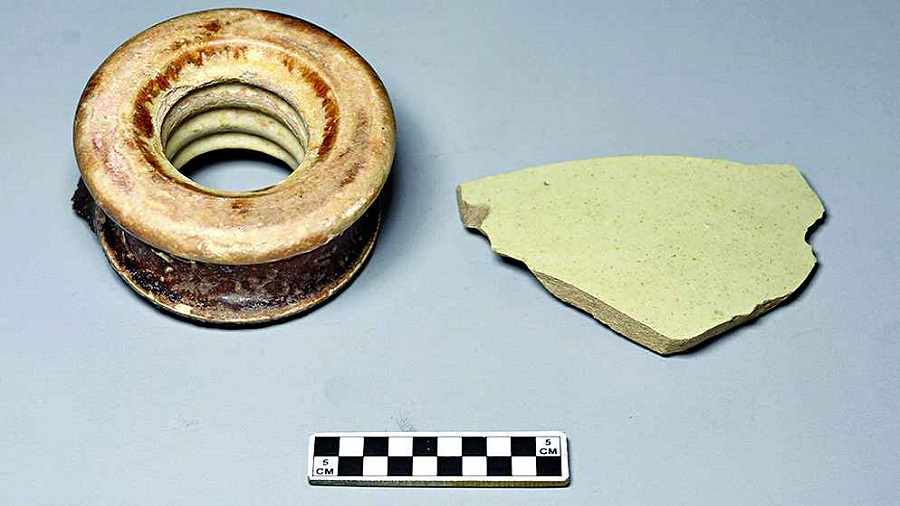A neighbourhood in Dum Dum, which is known by the name of a colonial structure it houses, was once a part of a trade route between India and other Asian countries and China, the Archaeological Survey of India has found.
The ASI protects the Clive House — named after Robert Clive the first British governor general — and the mound adjacent to it. Recent excavations at this site have unearthed Chinese ceramic porcelain and Burmese ceramic pottery that dates back to the 15th and 16th centuries CE (Current Era).
Further studies have revealed the possibility of this area once being used as a transit point for goods sent out or brought in from Chandraketugarh, near Berachampa in the North 24-Parganas district, which is around 34km from the Clive House site and is situated by the banks of the Bidyadhari.“There is a certain kind of depression across the mound. We have re¬ferred to maps dating back to the 18th century to find out that the road across the mound is actually built on palaeochannels, which connected to the Bidyadhari river,” said Shubha Majumder, the superintending archaeologist of the ASI’s Kolkata circle. A palaeochannel is a geographi¬cal term for the remnants of an inactive river or stream channel.
According to Majumdar, evidence indicates that traders would stop by this mound on their way to or from the port at Chandraketugarh. Rupendra Kumar Chattopadhyay, former Vivekananda Chair professor of the Kolkata University, said the Clive House mound appeared to be an ancient cargo loading-unloading area.“Chandraketugarh stands in an active tidal zone and hence, became a maritime hub. However, it is a rare possibility that it was also used to harbour ships because it stands in a lowlying area. Clive House, on the other hand, stood a little upland and little away from the active tidal zone,” Chattopadhyay said. He also added that this location was easily accessible from the Ganga valley as well as other rivers such as the Vidyadhari. Speaking of the mound near Clive House, Majumdar said this area was not used for permanent settlement.
“We have not found any structural evidence on the upper level of the mound. It was of strategic importance for business and trade.” Professor Chattopadhyay said the surroundings of the Clive House mound and the relics discovered must be further investigated to appear to a concrete conclusion. The relics have been sent for carbon dating, a process that can determine their age." The process would take around six months," he said.
Ancient transit point unearthed
Speaking of the mound near Clive House, Majumdar said this area was not used for permanent settlement. “We have not found any structural evidence on the upper level of the mound. It was of strategic importance for business and trade.”
Professor Chattopadhyay said the surroundings of the Clive House mound and the relics discovered must be further investigated to appear to a concrete conclusion. The relics have been sent for carbon dating, a process that can determine their age.“The process would take around six months,” he said.
